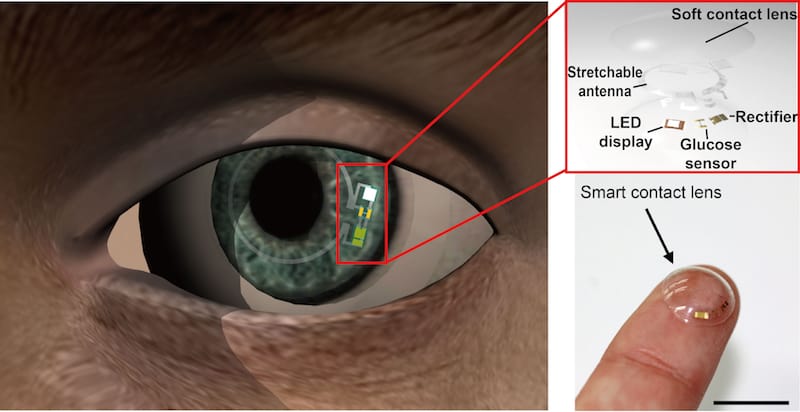Colour-changing contact lenses could improve drug delivery
26 Sep 2018 Rebecca Fong
Functional contact lenses are an exciting method of drug delivery to the eye, but have so far been limited by difficulties in controlling drug release and monitoring this release in situ. Now Jingzhe Deng and his groups at China Pharmaceutical University and Southeast University, China show that a combination of molecular imprinting and structural colour could provide a solution.
The researchers report (ACS Applied Materials & Interfaces) a contact lens containing specific drug-binding sites with the capability of sustained release over time. Furthermore, they show that the device can also self-report this drug-delivery process. As the binding and release of the target molecule to the contact lens results in a change of the refractive index of the matrix, drug release can be observed directly as a colour change of the lens.

In this study, Deng and his co-workers designed the lens as a photonic crystal, where the bright colour contact lens iris is a result of the 3D porous structure of the matrix. By using a regular arrangement of identical silicon dioxide nanoparticles as a template, the group created the well-defined structured polymeric lens with spherical cavities. The colour of the material is directly related to the size of templating nanoparticles: the greater the size of the spherical cavities, the longer the wavelength of light reflected from the contact lens.
In addition, the researchers show that the binding and release processes can be stimulated by the change in pH experienced when the lens is transferred from the drug-loading solution to an artificial tear fluid. This is because the pH affects the specific interactions between drug molecules and the functional monomer used to construct molecular-specific binding cavities.
As the binding and release of the drug molecule causes the expansion and contraction of the matrix, the team were then able to measure this directly by measuring the wavelength of the reflected light. They showed that the release of the drug from the lens for 12 hours decreased the reflected wavelength by 36.4 nm. A shift of this magnitude is perceivable as a colour change even by the naked eye.READ MORE

Save your tears
This innovative method of monitoring the drug release means that the tricky task of collecting and analyzing tears can be avoided. The researchers also suggest that the design of this functional lens based on these techniques can be applied to a range of drugs, where the combination of these techniques has the potential to address some of the major challenges encountered in drug delivery to the eye.
Moreover, the team demonstrated the reusability of these lenses. The molecular imprinted matrix was shown to be capable of repeated drug binding and release. The timescales of these binding and release processes could fit easily into a patient’s lifestyle, where the lens could provide treatment for 12 hours during the day, and then be subsequently re-loaded for 12 hours at night.
26/9/2018 from PHYSICSWORLD.COM

Δεν υπάρχουν σχόλια:
Δημοσίευση σχολίου